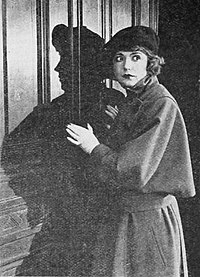
Photo from wikipedia
Listening to music often evokes intense emotions [1, 2]. Recent research suggests that musical pleasure comes from positive reward prediction errors, which arise when what is heard proves to be better… Click to show full abstract
Listening to music often evokes intense emotions [1, 2]. Recent research suggests that musical pleasure comes from positive reward prediction errors, which arise when what is heard proves to be better than expected [3]. Central to this view is the engagement of the nucleus accumbens-a brain region that processes reward expectations-to pleasurable music and surprising musical events [4-8]. However, expectancy violations along multiple musical dimensions (e.g., harmony and melody) have failed to implicate the nucleus accumbens [9-11], and it is unknown how music reward value is assigned [12]. Whether changes in musical expectancy elicit pleasure has thus remained elusive [11]. Here, we demonstrate that pleasure varies nonlinearly as a function of the listener's uncertainty when anticipating a musical event, and the surprise it evokes when it deviates from expectations. Taking Western tonal harmony as a model of musical syntax, we used a machine-learning model [13] to mathematically quantify the uncertainty and surprise of 80,000 chords in US Billboard pop songs. Behaviorally, we found that chords elicited high pleasure ratings when they deviated substantially from what the listener had expected (low uncertainty, high surprise) or, conversely, when they conformed to expectations in an uninformative context (high uncertainty, low surprise). Neurally, we found using fMRI that activity in the amygdala, hippocampus, and auditory cortex reflected this interaction, while the nucleus accumbens only reflected uncertainty. These findings challenge current neurocognitive models of music-evoked pleasure and highlight the synergistic interplay between prospective and retrospective states of expectation in the musical experience.
Journal Title: Current Biology
Year Published: 2019
Link to full text (if available)
Share on Social Media: Sign Up to like & get
recommendations!